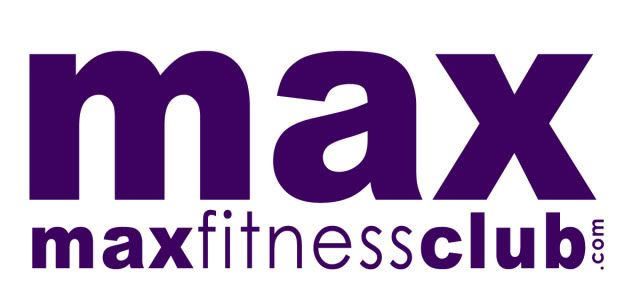BMI: The Unreliable Formula that Costs You Money
Many health professionals rely on unreliable methods to measure your health and determine insurance premiums.
Insurance companies are getting smarter and smarter by the minute. They now realize rewarding people for good health and providing fitness incentives pays. Maybe they are a little slow to learn but, overall, they are starting to get the whole “healthy” concept. However, there is a big loophole in their plan. Many insurance companies use unreliable methods, like BMI (Body Mass Index), to help determine if someone is a risk.
What is BMI?
BMI is a mathematical formula, based on height and weight, to help doctors determine if someone is at a healthy weight or not. The problem is the BMI does not take body fat and muscle mass into consideration. Basically, it’s just measures how much mass you take up in space for your height. If you are over the limit, you are labeled “overweight” no matter what how low your body fat is.
For instance, when using an online BMI Calculator for Steve, his BMI was 28.29, which is overweight – although Steve’s body fat percentage is normally around 8%. After the calculation was made the site said he “would benefit from finding healthy ways to lower his weight, such as diet and exercise.” I almost had to laugh, but the BMI is no laughing matter to fit people who are getting charged more for being so-called overweight, according to the BMI.
The BMI Lies – and YOU are the one who pays
One of our members has experienced this first hand. Every year he stresses out about his company health insurance tests because, although he is not a big bodybuilder kind of guy, his muscle puts him in the overweight category. He gets docked for that, costing him an extra $500 a year for being “overweight”.
Meanwhile, people with less muscle and more body fat, who register at a healthy weight, save money even if they haven’t worked out a day in their life. While our member works his butt off in the gym, this other lazy guy gets rewarded for not doing anything.
False Readings Give False Hope
LiveStrong actually addressed this very issue, referencing a study from the Mayo Clinic. The study found as many as half of all individuals with a “normal weight” according to the BMI test, were actually overweight or obese when they tested their body fat. We see this all the time at the club because we use a high-tech InBody machine to do our body compositions. Our machine not only measures height and weight, but it also considers your age. Then it measures your intracellular water weight, extracellular water weight, muscle weight and body fat, resulting in a very accurate report.
Many people are completely shocked when they see their body fat-to-muscle ration puts them in the overweight category, even if their weight is normal for their height. Since most people lose muscle as they get older, unless they are purposefully working to maintain it, this is even more common for seniors. The InBody machine is one of the few machines that gives accurate details of what is actually going on inside your body, beyond the scale.
Insurance Agencies Still Live in the Dark Ages
 Insurance companies need to get out of the 1800s, which is when the BMI was first actually first devised. Originally known as the Quetelet Index, BMI finally made headlines after a paper was published in 1972 by Ancel Keys, stating the BMI was the best proxy for body fat using the weight and height ratio. However, everyone seemed to ignore Keys’ remarks about BMI being appropriate for population studies, but inappropriate for individual diagnosis. So, not only is the BMI as out of date as polyester and bell bottoms, it’s also not being used as it was originally intended.
Insurance companies need to get out of the 1800s, which is when the BMI was first actually first devised. Originally known as the Quetelet Index, BMI finally made headlines after a paper was published in 1972 by Ancel Keys, stating the BMI was the best proxy for body fat using the weight and height ratio. However, everyone seemed to ignore Keys’ remarks about BMI being appropriate for population studies, but inappropriate for individual diagnosis. So, not only is the BMI as out of date as polyester and bell bottoms, it’s also not being used as it was originally intended.
 Some insurance companies may argue they also measure body fat, but many insurance agencies are not using reliable methods. Fat caliper measurements test the fat in the skin folds, but results can vary depending on the person doing the pinching. Also, the less pinching, the less reliable. A 7-site skin fold test is the best, but you still have plenty of room for error depending on the person’s expertise. Two different people can do measure the same person and come up with two different results.
Some insurance companies may argue they also measure body fat, but many insurance agencies are not using reliable methods. Fat caliper measurements test the fat in the skin folds, but results can vary depending on the person doing the pinching. Also, the less pinching, the less reliable. A 7-site skin fold test is the best, but you still have plenty of room for error depending on the person’s expertise. Two different people can do measure the same person and come up with two different results.
 While some insurance companies attempt to do caliper testing, many rely on the easy route, which requires no technical skill at all. Cheap body fat machines, like a body fat scale or a handheld device are their method of measurement. These machines use electrical impedance to measure body fat like our machine, but it only uses two points of contact, where our machine uses 8 conductors. This means the scale version only measures your lower body, and the handheld device only measures your upper body.
While some insurance companies attempt to do caliper testing, many rely on the easy route, which requires no technical skill at all. Cheap body fat machines, like a body fat scale or a handheld device are their method of measurement. These machines use electrical impedance to measure body fat like our machine, but it only uses two points of contact, where our machine uses 8 conductors. This means the scale version only measures your lower body, and the handheld device only measures your upper body.
Then you have the issue of your thighs touching each other on a small scale or your arms touching your sides on the hand held machine, which can throw off the already less than accurate reading. In addition, hydration and food intake have a huge effect on the reading, making you look like your body fat is 15% higher or lower depending on your hydration prior to the reading. All in all, these cheapy body fat machines could cost you money.
While I love to hear insurance companies offering incentives and holding people accountable for their body weight (and maybe something is a little better than nothing) I hope the medical industry can catch up with the fitness industry, when it comes to using more reliable ways to measure someone’s body composition, so fitness and health can see eye to eye.
How to get an accurate InBody Analysis
Measure first thing in the morning on an empty stomach.
Do not receive your analysis right after a shower. Skin and hair should be nice and dry.
Space legs and arms apart, not touching other body parts.
Do not drink prior to your analysis.
Do not workout prior to your analysis (as it will skew muscle mass from the muscles being pumped up)
Make sure your body temperature is regulated before your reading, not being excessively hot or cold.
Do not wear jewelry.
Avoid measuring during your menstrual cycle.
Always measure the same time of day for the most accurate comparisons.
Bring a printed copy of this blog and get one InBody Report at Max Fitness Club for $20.00 (regularly $50.00) or 2 for $30.00.
Credits
BMI Comparison Cartoon: HowStuffWorks.com
Chart: Healthy Weight Forum
Posted on August 2, 2012, in Health, PFIT TIPS and tagged BMI, body fat, body fat analysis, body fat percentage, body fat scale, Health, healthcare costs, inbody, insurance, measure body fat, reliable body composition. Bookmark the permalink. 6 Comments.

































It’s so true! Just had my annual physical and had to sit there shaking my head, as my doctor diagnosed me as overweight, completely ignoring my muscle mass and fitness level. I think the development of BMI started out with good intentions, but your example of Steve proves it’s no longer relevant.
I have a ton of muscle but luckily still within the range but yes & than you for sharing!
Have been working out for a few years with a pro bodybuilder and a set goal.
December last year I was told by the doctor that I was obese and needed to lose weight, she even had the nerve to ask if I sweat when I do my cardio…….you got to be kidding me. Told me I did myself a disservice by adding muscle mass. What happen to muscle burns more efficently than fat.
Geez I cant believe this! Luckily we dont seem to have this issue (yet) in South Africa.
Lets home the medical industry catches up soon, although I doubt they will, they always seem to be about a decade behind the fitness industry.
What you said made a great deal of sense. However, think on this, what
if you typed a catchier title? I ain’t saying
your information is not solid, but what if you added a title that grabbed folk’s attention?
I meaqn BMI: Thhe Unreliable Formula hat Costs You Money | PFITblog is kinda
boring. Youu ought too peek att Yahoo’s home page and watch how they create post headlines to grab viewers to open the links.
You might try adding a video or a pic or two to grab people excited
about what you’ve got to say. Just my opinion, it could bring your posts a
little bit mire interesting.
Pingback: Use the Body Mass Index Formula to Assess Your Child’s Body Fat Percentage | ABC-CARE.NET